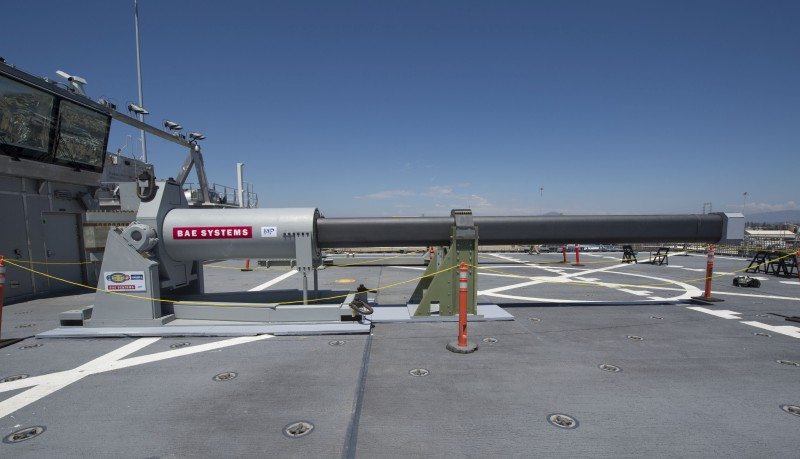The Department of Defense is struggling to define a strategy for recapturing the high ground in military technology and countering the proliferation of so-called anti-access/area denial (A2AD) threats.
Senior Pentagon officials acknowledge that the military’s ability to project power and support friends and allies is eroding. The Defense Innovation Initiative and so-called “third offset strategy” unveiled recently by Deputy Secretary of Defense Robert Work are intended to restore U.S. military preeminence and counter a range of threatening capabilities.
According to Work, we are at a time in history, much like the interwar years of the 1920s and 1930s, when politics and technology were evolving rapidly to produce both new adversaries and a new way of warfare. Key to the third offset strategy will be advances in such areas as robotics, autonomous operating guidance and control systems, visualization, biotechnology, miniaturization, advanced computing and big data, and additive manufacturing or 3D printing.
Without waiting for a DoD-led initiative to provide it with sailing orders, quietly and carefully, the U.S. Navy has been pursuing what is, in effect, its own offset strategy. The Navy is well on its way to bringing actual capabilities to the game. In fact, taken as a whole, the Navy’s investments in new ships and aircraft, weapons systems and information architectures will not only address many of DoD’s strategic concerns but could fundamentally change the face of U.S. seapower.
The poster child for Navy technology innovation may be the rail gun, developed by BAE Systems. A working prototype of this revolutionary weapons system was on display last week in Washington, D.C. at the Navy’s Future Force Science and Technology Expo. A rail gun uses electromagnetic energy to accelerate a projectile down a set of rails at speeds approaching Mach 6 and out to a range of up to 100 NM. The kinetic energy imparted by this projectile is sufficient to destroy aircraft and missiles and damage surface combatants. With a terminally guided projectile, this is truly a one shot per kill system.
The rail gun is not a science experiment. The Navy plans to conduct an integrated test of a rail gun on a Joint High Speed vessel next year. The Chief of Naval Operations, Admiral Jonathan Greenert, surprised his audience at the Navy Expo by suggesting that the rail gun might even be deployed on the third Zumwalt-class DDG-1000, in place of one of that ship’s two advanced gun systems. The Zumwalts’ integrated power system allows them to generate, store and direct immense amounts of electric power that can be used to power a rail gun, other directed energy weapons and extremely capable sensors and electronic warfare suites. The Navy is also considering deploying advanced energy weapons on the Flight III variant of the Arleigh Burke destroyers.
Even by itself, the rail gun is a potent weapons system for Fleet self-defense. Together with a laser, they could radically alter the balance between offense and defense. The Navy tested a prototype laser weapon aboard the USS Ponce this summer in the Persian Gulf. Rail guns and lasers offer the prospect for near instantaneous engagement, deep magazines and very low cost-per shot.
Rail guns and lasers will be complemented by a growing array of ship, aircraft and submarine launched offensive and defensive weapons systems. These include the Standard Missiles 3 and 6, the Advanced Tomahawk cruise missile, the Joint Air-to-Surface Standoff Missile-Extended Range and, in the not too distant future, the Long-Range Anti-Ship Missile and possibly the Naval Strike Missile, a replacement for the Harpoon.
The Navy’s long-standing investments in networking, epitomized by the Cooperative Engagement Capability and Naval Integrated Fire Control-Counter Air (NIFC-CA), are about to get leveraged with the deployment of the E-2D Advanced Hawkeye, the P-8 multi-mission maritime patrol aircraft, the F-35 Joint Strike Fighter and several classes of land and ship-launched unmanned aerial systems. The data from an array of airborne, sea and land-based sensors can be employed to support over-the-horizon engagements. This will substantially enhance the reach of naval forces.
The Navy’s ability to exploit the undersea domain rests on two pillars. The first is continuing production of ever more capable blocks of the Virginia-class attack submarine. The second pillar is the imminent deployment of advanced unmanned underwater vehicles (UUVs). The Navy is investing heavily in the sensors, power generation and storage systems and software for autonomous operations that will turn each UUV into a true mini submarine.
Finally, the Navy is making great strides in the area of electronic warfare. The EA-18G Growler will soon be equipped with the Next Generation Jammer. There is also the Block III upgrade of the Surface Electronic Warfare Improvement Program that will provide surface ships with the ability to counter threats almost at the horizon.
Nothing moves very fast when it comes to changing out major classes of ships, aircraft and weapons systems. Nevertheless, the Navy is well down the road to deploying an array of capabilities that will go a long way towards providing the kind of offset that the Pentagon leadership is looking for.










